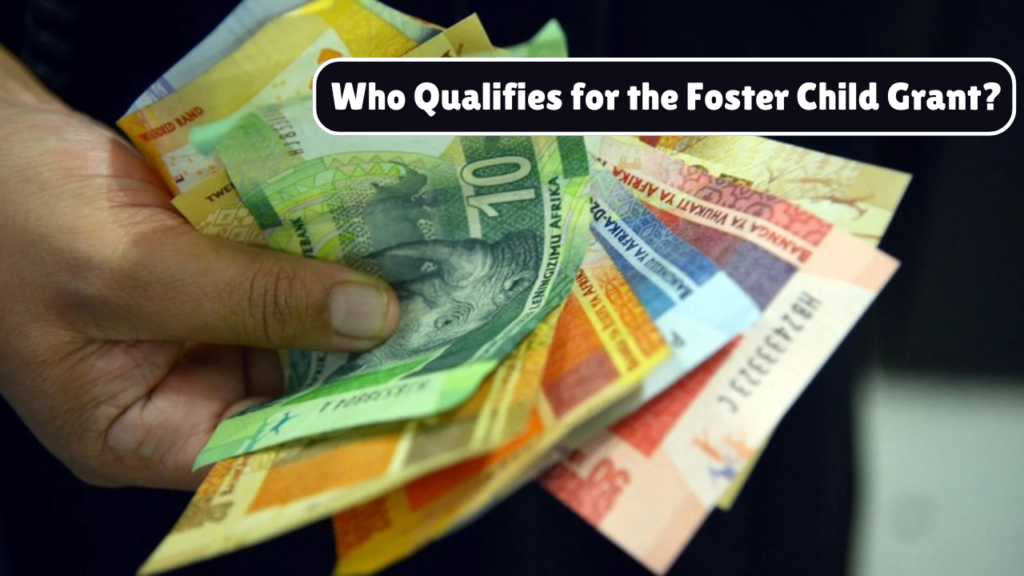The South African Social Security Agency (SASSA) has confirmed that the Foster Child Grant will increase to R1,250 per child in March 2025. This essential financial aid is designed to support foster parents and legal guardians who care for children in need. Here’s everything you need to know about the grant, eligibility, application process, and payment schedule.
Key Highlights of the R1,250 Foster Child Grant
- Increased Payment: The Foster Child Grant will be R1,250 per child per month, effective March 2025.
- Eligibility Remains Unchanged: Foster parents must have a valid court order confirming legal guardianship.
- Payment Schedule: Payments will follow the regular SASSA grant disbursement cycle.
- Online and In-Person Applications: Applications can be submitted at SASSA offices or through the official SASSA website.

Who Qualifies for the Foster Child Grant?
To qualify for the SASSA Foster Child Grant, applicants must meet the following criteria:
- Legal Guardianship: The foster parent must have a court order confirming their status as a legal foster parent.
- South African Citizenship: Either the child or the foster parent must be a South African citizen, permanent resident, or refugee.
- Child’s Age: The child must be under 18 years old.
- Residency Requirement: The child and foster parent must reside in South Africa.
- Valid Foster Care Status: The child must be placed under foster care by a court order.
How to Apply for the R1,250 Foster Child Grant
Eligible foster parents can apply for the SASSA Foster Child Grant using the following process:
1. Gather Required Documents
Before applying, ensure you have the necessary documentation:
- Certified copy of your South African ID (or refugee permit for eligible applicants)
- Certified copy of the child’s birth certificate
- Court order confirming foster care placement
- Proof of residence
- Banking details (if opting for direct deposit payments)
2. Submit the Application
Foster parents can apply through the following methods:
- Visit a SASSA Office: Go to your nearest SASSA office and complete the application with assistance from an official.
- Apply Online: Submit your application via the official SASSA website.
3. Verification and Approval
- SASSA will review the application and verify all documents.
- A SASSA official may conduct a home visit to confirm eligibility.
- Processing typically takes up to three months.
4. Receive Payments
Once approved, you will start receiving R1,250 per month, either via:
- Direct bank deposit
- SASSA card withdrawal
- Cash collection points

Payment Schedule for March 2025
The Foster Child Grant will be distributed according to the regular SASSA payment cycle. Below is the expected schedule:
| Grant Type | Payment Date (March 2025) |
|---|---|
| Foster Child Grant | 5 March 2025 |
| Old Age Pension | 4 March 2025 |
| Disability Grant | 6 March 2025 |
| Child Support Grant | 7 March 2025 |
Conclusion
The R1,250 Foster Child Grant for March 2025 is a crucial financial support measure for foster parents caring for vulnerable children in South Africa. By following the correct application process, eligible guardians can ensure they receive this important assistance. For further inquiries, visit your nearest SASSA office or check the official SASSA website.
FAQs
1. Can I apply if I am not a South African citizen?
Yes, refugees and permanent residents can apply, provided the child is legally placed under their care by a South African court.
2. How long does it take for the application to be processed?
It usually takes up to three months, depending on verification and document review.
3. Can I receive the Foster Child Grant if I already get other SASSA grants?
Yes, you can receive the Foster Child Grant in addition to other SASSA benefits, such as the Child Support Grant.
4. What happens when the child turns 18?
The grant will stop when the child turns 18, unless the foster care court order extends beyond that age.
5. How can I check my payment status?
You can check your payment status by:
Visiting the SASSA website
Calling the SASSA helpline (0800 60 10 11)
Checking at your nearest SASSA office















